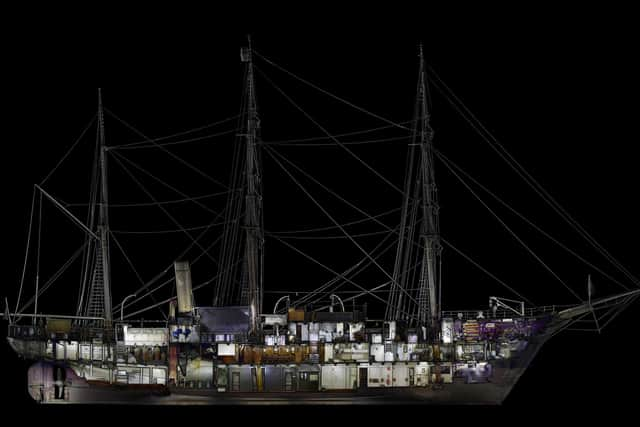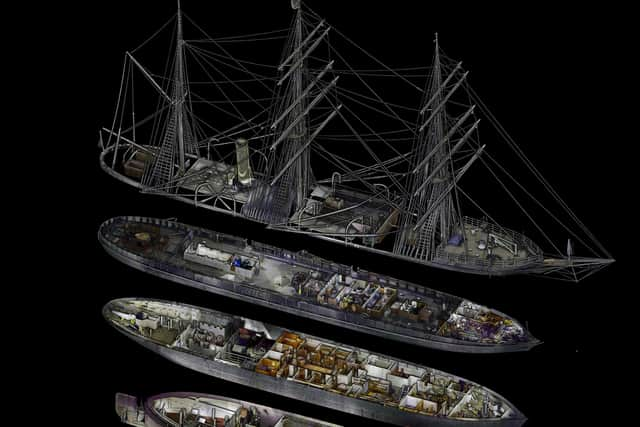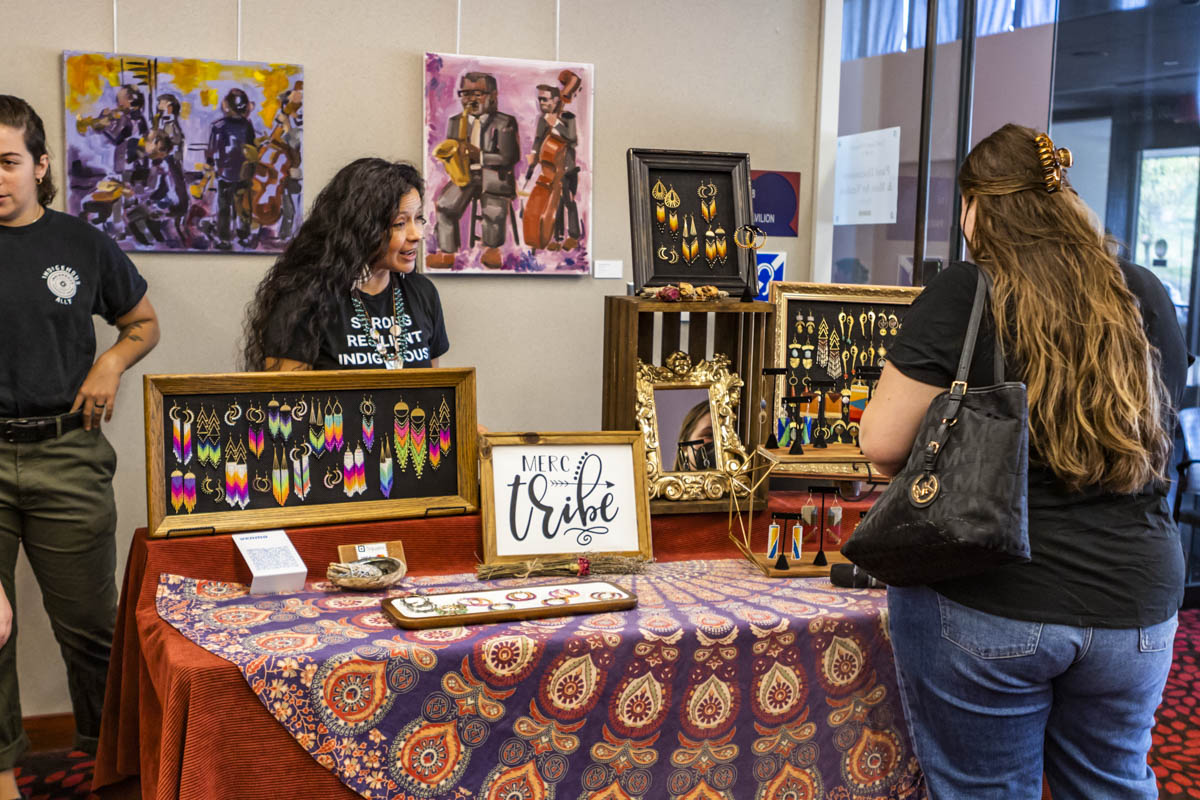Shackleton’s famous Scottish ship was explored like never before when a “digital twin” was created

New light on the lives of heroic Antarctic researchers
The Scottish ship that first took Scott and Shackleton to Antarctica can be explored like never before after the creation of a “digital twin” of the historic vessel.
Built in Dundee in 1901, the RSS Discovery took Shackleton and fellow explorer Robert Falcon Scott to ice-covered Antarctica. It was the first official British exploration of the region in 60 years.
The ship was the first of its kind built specifically for scientific research and allowed the team to penetrate deep into what was then a largely untouched continent, documenting discoveries such as the emperor penguin colony at Cape Crozier, the Antarctic Plateau – where the South Pole is located – and many new marine species.




Read more
The forgotten Inuit human zoo from Dundee’s whaling past
Now a team from the University of Southampton has created the most detailed and accurate 3D replica of Discovery yet, providing new insights into how the ship was built and used. The project will drive forward vital restoration work on the ship.
Dr Michael Grant, from the Coastal and Offshore Archaeological Research Service at the University of Southampton, said: “This digital twin offers a fantastic opportunity for more people to explore this fascinating ship and learn about its history in a completely new way, including in areas of the ship that are not accessible to the public.”
Historical items associated with Discovery’s Antarctic expeditions between 1901 and 1931 have now been returned to their place on the ship following extensive work to create 3D scans of the items. A scattered collection of relics, scientific specimens and documents has been reunited.


Dr Felix Pedrotti of the Southampton Marine and Maritime Institute at the University of Southampton said: “With the advent of new technologies such as laser scanners and UAVs, we can now create highly accurate digital twins. These digital replicas provide invaluable insights into the RRS Discovery, including its structures and layouts.”
The 1901 expedition marked the beginning not only of Scott and Shackleton’s careers, but also of some of the leading figures of the so-called “Heroic Age of Antarctic Exploration”, including Edward Wilson, Frank Wild, Tom Crean and William Lashly.
The RRS Discovery is the only surviving British ship from this venerable period, which lasted from the end of the 19th century until the Shackleton-Rowett expedition of 1921-1922.


The ship returned to Dundee in 1986 and is now managed by the Dundee Heritage Trust (DHT) and is a visitor attraction attracting 80,000 people each year.
The project will provide the DHT team with vital information for the ship’s restoration. The age of this ship means ongoing conservation is necessary as the ship is damaged in several areas including parts of the inner hull, bow and propeller shaft. A £1.4 million grant from the National Heritage Memorial Fund will fund the first phase of Discovery’s full restoration.
Mel Ruth Oakley, Curator at DHT, said: “The opportunity to take part in this project is invaluable to Dundee Heritage Trust. As we embark on a major conservation project, this digital scan of the ship will provide us with a detailed record of the ship before work begins. This is incredibly helpful in planning the conservation work we will undertake.”



